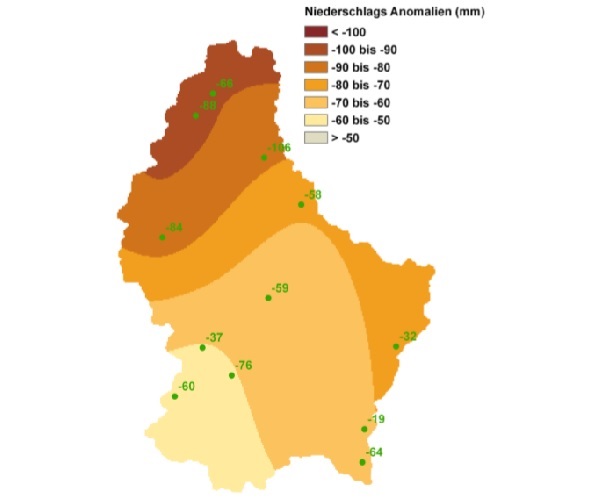 Rainfall in Luxembourg for Spring 2020 compared to the 1981-2010 average;
Credit: AgriMeteo
Rainfall in Luxembourg for Spring 2020 compared to the 1981-2010 average;
Credit: AgriMeteo
Spring 2020 was +1.1°C warmer and significantly drier than average. On the clear nights in March and shortly after Easter there was late frost across the entire country, which in places and depending on varieties, led to damage in fruit growing. It did not rain for over a month, from 22 March to 27 April.
Consequences for agriculture
The EU Commission, meanwhile, is already assuming reduced yields in agriculture in this part of Europe. The low rains in March and end of April are by no means sufficient to make up the gap in this phase. The development of weather conditions in the coming weeks will be particularly important for winter wheat cultivation, summer crops (especially for corn), as well as for grasslands. In the case of fruit crops, the two nights after the Easter weekend saw frost damage in places and depending on the variety as, in the middle of the flowering period, the temperatures fell below the threshold of -3.5°C. In fruit growing areas, some of the flowers in the fruit trees were damaged by these frosts. However, it is still too early to assess the overall impact of these late frosts on fruit production.








